This week we are taking a quick trip around Spanish wine regions and grapes as we kick off a three-part summer series leading up to a very special Sherry episode in a few weeks. Splattered across our Wino Radar are blue alcoholic beverages, which are now … a thing? Oh, and then Steph breaks down a Colorado booze bill into bite-sized chunks for us to digest. Or spit out. You decide. Either way, we hope you’ll enjoy a little daytime sip along with us!
Val: “Hey everybody, it is Wine Two Five time! In other words, it’s cocktail hour, it’s not five o’clock, and we do not care. Welcome to episode 63!”
Steph: “Yes, it’s been summer for almost 22 hours as of this recording and we’re kicking it off with some talk about the wine regions of Spain – outside of Rioja – and some wine in the middle of the day.”
Drinking: what’s in our glasses
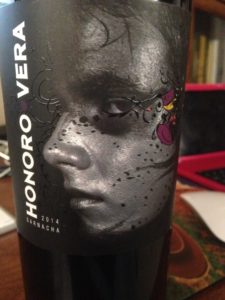
Val: “A wine from Calatayud, a region in Spain, Honoro Vera, by Bodegas Ateca. This is a 2014 old vine Garnacha, which is a red grape we know as Grenache in the south of France. The wine is made from gnarly old vines (about 30 or 40 years old) that have to struggle in a dry region with gravelly soils. It’s super rich (and alcoholic at 14%). $10.”
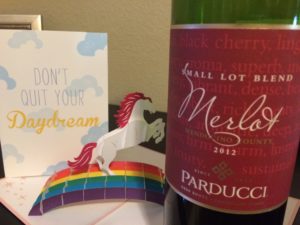
Steph: “2012 Parducci Small Lot Blend Merlot that my neighbors brought over last weekend. Parducci is located in Mendocino County, CA and is still a family-run winery. They operate on 100% green power with their carbon neutral run winery. Very cool! Parducci’s been making wine for 80 years. $12 (13.5% abv).”
Discussion and Factoid Palooza:
Steph: 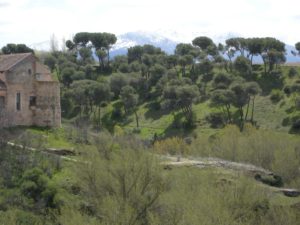 “Spain – it’s more than Rioja, as we are going to talk about this month. Here are just a few little Spanish sips to savour:
“Spain – it’s more than Rioja, as we are going to talk about this month. Here are just a few little Spanish sips to savour:
- Spain has more acres (over 2.5 million) under vine than any other world wine region
- Airen dominates plantings with over a million acres; it is the most planted white grape in the world, and now number three globally with Merlot & Cabernet in front.
- Spain has over 200 grape varieties planted, mostly indigenous (Airen, Tempranillo, Bobal, Mencia, Palomino, PX, Macabeo, Garnacha, Monastrell, Pardina, to name a few)
- More than half of Spain (60%) is at an altittude of over 2000 feet”
Val: “Modern regions of Spain are divided into seven main regions:
- Green Spain, which includes Rias Baixas and some regions in the northern coast where they make the Txacolina. It’s called Green Spain due to the cooler, more Maritime influence and abundance of rain. Grapes are fun here: whites include Albarino, Godello, Treixadura, and the red Mencia. For the Txacolina they use mainly the Hondarribi Zuri (white version, but there is a red version of this grape too.)
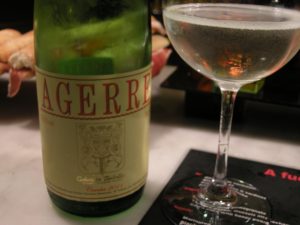
- The Duero River Valley or North Central Spain includes the Ribera del Duero, Rueda, Toro, and Cigales. Main grapes include Tempranillo, Garnacha, Verdejo, & Viura.
- The Ebro River Valley is where we find Rioja, Somantano, Campo de Borja, Calatayud and Navarra. It’s pretty hot and dry here, but we can find wines made with Garnacha (55% of plantings), Tempranillo, Carinena, Viura, and Garnacha Blanca. Navarra is a region known for great rose’ wines too!
- Maseta is the higher elevation “table” land in the middle of the country where we find La Mancha and a lot of bulk juice … and that Airen. Actually, about 2/3rds of Spain’s vineyards are here.
- The Mediterranean Coast, on Spain’s warm East Coast, is where we find Jumilla, Montsant, Penedes, Priorato, Valencia, Alicante and most of the Cava vineyards.
- Andalucia is in another hot area in the south of Spain, just across the sea from Morocco. Here we find the famous Jerez (Manzanilla de Sanlucar de Barrameda), Montilla-Moriles and Malaga. Grapes include the great Sherry grapes of Palomino, Moscatel, PX. You can also get some great dry Muscat table wines from Malaga.
- Island regions encompass the Balearic Islands in the Mediterranean and The Canary Islands in the Atlantic”
Steph: “I know we’re trying to keep this episode short, but there’s a lot to cover when it comes to Spain. Which is exactly why we are going to break up the topic into a series of 3 episodes. Today we’ve given you an overview, and the next 2 weeks Val and I will dive into some more specifics. Please let us know on Twitter and Facebook if you have anything in particular you’d like us to cover. We’ll attempt to fit it in or drink it on the show! You never know.”
We also would like to mention that our affiliate, Taste Vacations, is taking a small group of wine lovers over to Basque Country and La Rioja October 9-14th.
Winoradar:
Val: “Blue wine (and booze) is, apparently, a thing. If we weren’t talking about Spain I probably would have left this off, but … this latest thing comes from Spain. It is getting as much attention on social media as Girl Scout Cookie and wine pairings – and not for the right reasons. First of all, it’s not available in the US. It was launched in Spain by entrepreneurs who – and I know this will surprise you – know zero about winemaking. That’s not always a bad thing because they are not marketing to connoisseurs or those of us trying to evaluate wines using a “grid” or “SAT” for points on exams. They are marketing to people who want to drink something new and funky.
- The blue color comes from Indigotine [a plant-based food dye] and anthyocyanins which occur naturally in grape skins.
- My thing – sweeteners are added too. So, technically, this is a wine-based beverage, although it is made with juice from both red and white grapes
“This isn’t the first blue beverage to get either a “yay, cool” or “WTF?” from the public. There’s the Sparkling blue wine called Blanc de Bleu too. Apparently the blue color comes fro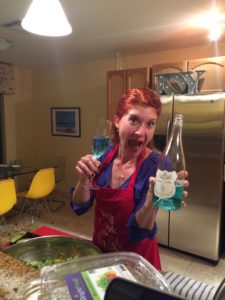 m blueberries. There is also a blue gin from France called Magellan? It is iris-flavoured and the blue color comes from the Iris root and flower. So, my irises out front are edible? John is SO going to come home to a blue cocktail made from flowers I chopped down from our front garden.
m blueberries. There is also a blue gin from France called Magellan? It is iris-flavoured and the blue color comes from the Iris root and flower. So, my irises out front are edible? John is SO going to come home to a blue cocktail made from flowers I chopped down from our front garden.
“So there it is. People are drinking blue. Val is not. I get enough grief from my dental tech with all the blueberries & coffee stains on my teeth.”
Also, here is the video of the Irish brewer tasting cheap wine, including a blue one that you can get in the US. It’s quite funny: https://www.youtube.com/watch?v=840waOfQ50o
Steph: “This is the biggest change to Colorado liquor laws since Prohibition in 1933 just happened and will be effective July 1, 2016 with the passage of Senate Bill -197. And you’re like – What? What is that? So here’s the down & dirty on this long, boring, and difficult to understand bill that was just signed by Governor Hickenlooper. It is an olive branch, per se, or, as the news media is calling it, a compromise, between the Keep Colorado Local group (represented by the breweries & liquors stores) and the Your Choice Colorado group (represented by grocery stores).
- The governor hopes that by signing the bill, Your Choice Colorado will back down from its ballot initiative proposed for the November election.
- Basically, as of July 1st, grocery stores in Colorado can sell full strength beer & wine and expand sales to 20 locations, in phases, over 20 years.
- However, to get those liquor licenses, they have to buy up all the liquor stores licensed within 1500 feet of that store. This is expensive.
- Ultimately, after 2037, the limits go away and the competition goes full force.
- As this new legislation stands, the local mom & pop liquor stores are somewhat protected. They also get to expand up to 4 locations/licenses and start selling some food products like cheese & bread.
“AND here is what Your Choice Colorado has to say about it…
- Coloradoans won’t be able to buy wine in grocery stores. The bill requires a multi-year permitting process to sell wine, but already excludes many grocery stores.
- The bill’s wording is open to interpretation and might prevent any real change.
- There is a provision in the bill that silences voters.
“UGH – I need a drink!… and the jury is still out on whether or not we’ll see this on the ballot in November. Val and I will be sure to let you know what happens.”
Val: “Soooo….my backward former state of PA beat us to wine in grocery stores – although we beat them to direct selling – I never thought I’d see that happen. Congratulations, PA! But we had pot first. So there’s that.”
Shoutouts:
Steph: “Thank you to our Twitter family and shout out to our new listener – Kelly Hungerford @KDHungerford. Also, high fives to our FaceBook action from Jeff Solomon and Susan Golicic.”
Val: “Shoutouts also to Lynn who is posting from Italy right now, and also to the #podernfamily on twitter. We’ve made so many new podcasting buddies, so thank you for including the W25 ladies!”
Steph: “Annnnd that’s all we have for this week. Connect with Val on Twitter @WineGalUnboxed and on the Vino With Val FB page, and on instagram as Vino with Val. You can find Steph on Twitter @Albarellosoap and on the AlbarelloSoap FB page, and check out the videos on the Albarello YouTube channel!”
Val: “You can visit us on the WineTwoFive website, FB page, Twitter, Pinterest & YouTube or check out our contact page. Also, if you want to build your collection of wine books – particularly the ones we’ve mentioned on this show, you can check out our website for an extensive list as well.
“We hope that you’ll share Wine Two Five with your friends and online community and appreciate all your involvement and feedback and especially iTunes reviews. One more thing… Don’t forget to use the #W25Challenge when you are trying new wines and drinks & thank you to those who have been posting. So until next week – Cheers!”